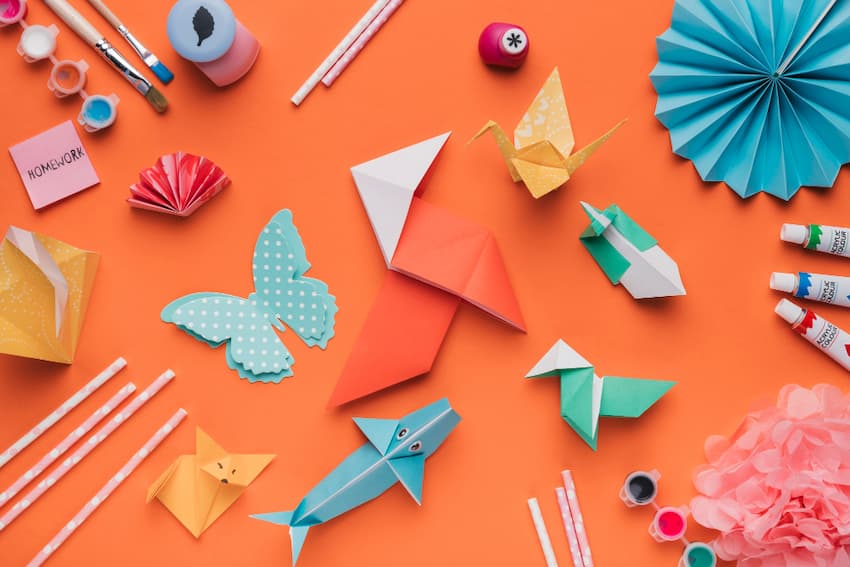Cocador is a guest in your lives in a wide variety of areas, from hair care to japanese origami paper techniques. You’ll get lots of definitions, details, images and so on. That’s why we’ll make this entrance as short as possible. We have created a rough outline for our article. Good luck with your reading.
- get started making 3D paper art with origami paper
- unlock your creativity with japanese origami
- what you need to make 3D paper art with origami paper
- paper folding techniques to create paper sculpture with origami paper
- how to make 3D paper art with origami paper for fun handicrafts
- FAQ

Making 3D Paper Art with Origami Paper
Creating 3D paper art through paper folding is an enjoyable and fulfilling handicraft that can ignite your creativity and imagination. Whether you are a novice or a seasoned paper crafter, experimenting with origami paper can help you enhance your skills and master novel techniques to make intricate designs. With its diverse selection of colors, patterns, and textures, Japanese origami paper presents a perfect medium for your paper sculptures.

By utilizing some basic tools and a lot of perseverance, you can craft exquisite pieces of art that you and your kids will love to showcase. Exploring the art of paper folding with origami paper not only enables you to unleash your artistic potential but also allows you to enhance your crafting abilities while having fun.

Unlock Your Creativity with Japanese Origami
Trying your hand at Japanese Origami can provide a fun and satisfying pastime while also providing numerous physical and mental health advantages. This paper craft can aid in calming your mind, sharpening your attention, and enhancing your cognitive skills.
The rich heritage and culture behind Japanese Origami offer a unique approach to learning the art of paper folding. Thus, it is the perfect way to immerse yourself in this world of handicrafts and reveal your artistic potential. So, why not give Japanese Origami a try and let it stimulate your creativity?
Tutorial | How To Make a Origami Paper Crane
Whenever you wish, you can watch free tutorial of origami paper crane which is our team’s favorite.

What You Need to Make 3D Paper Art with Origami Paper
To start creating beautiful paper sculptures, having these essential tools at hand can help you achieve your desired results. By utilizing your creativity and these basic supplies, you can begin exploring the art of paper folding and making remarkable 3D paper art pieces.
Also origami paper, you’ll also need a flat and smooth surface to work on, like a desk or table. A ruler can come in handy to achieve precise folds. In addition scissors may be necessary to cut the paper to the appropriate size.

Paper Folding Techniques to Create Paper Sculpture with Origami Paper
To create breathtaking Origami paper sculptures, it’s crucial to master the techniques of paper folding. By comprehending the various folding techniques and their applications. Furthermore you can produce intricate designs and bring your paper artwork to life in three dimensions. Each technique is unique in its function and has a significant impact on the final design.

How to Make 3D Paper Art with Origami Paper for Fun Handicrafts
To commence your Origami journey, you’ll require origami paper, a level work surface. Also a guide or tutorial to assist you through the folding process. It’s time to unleash your imagination! Starting with basic designs such as paper cranes or flowers can help you gain confidence. And then you can move on to more intricate sculptures like animals or geometric shapes.

FAQ
Origami is commonly crafted using specially designed paper made for folding. This type of paper is thin, robust, and easy to bend, making it perfect for creating complex patterns and shapes. Origami paper is the most widely used paper for Origami, and it is usually square-shaped and available in a range of sizes, hues, and textures.
Origami paper is distinct from regular paper. Specifically created for folding, Origami paper is typically thinner, sturdier, and more pliable than ordinary paper. Additionally, it comes in various sizes, hues, and textures, and it is commonly square-shaped, which is perfect for producing Origami patterns.
While A4 paper is a viable option for origami, it may not be the optimal choice as it is rectangular in shape instead of the traditional square shape of Japanese origami paper. This can pose challenges in achieving accurate origami folds and creating specific paper sculptures.
Japanese origami paper is usually thin, as it is necessary for the paper to be light and easy to fold in order to produce intricate paper art and 3D paper sculptures. However, the thickness of the paper may differ depending on the type and brand of origami paper used. Certain origami paper variations may be slightly thicker or possess unique textures, which can impact the ease of paper folding and the appearance of the final design.
The utilization of scissors in origami is a topic of debate within the origami community. In traditional origami, the paper sculpture is entirely created through the use of paper folding techniques, without any cutting or adhesive materials.
The standard size of Japanese origami paper is typically 15 x 15 cm (around 6 x 6 inches), which is the most commonly used size.
The complexity of learning origami is contingent on both the complexity of the design and the proficiency level of the learner.
The word “origami” itself is of Japanese origin and translates to “folded paper”.
Completing each design can also instill a feeling of triumph and satisfaction.
Precision folding and manipulation of paper in origami can enhance hand-eye coordination and fine motor skills.
Fosters creativity: Origami can inspire innovation by motivating individuals to explore with various shapes and designs.
It can also help in building problem-solving skills as they navigate the folding process to achieve their desired outcome.





